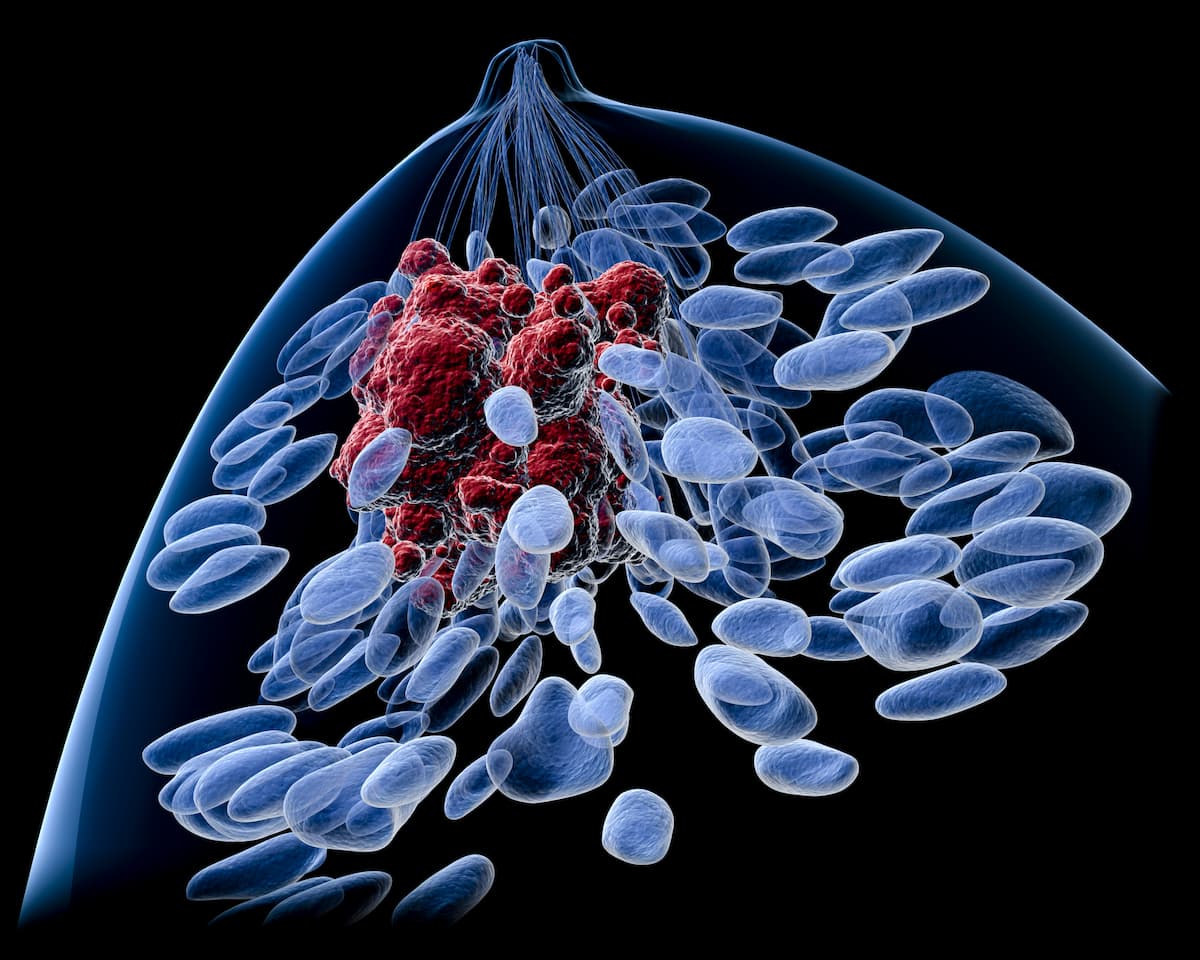Sacituzumab Tirumotecan Prolongs PFS Vs Chemo in Pretreated Breast Cancer
Data from OptiTROP-Breast02 support sac-TMT as a new treatment option for those with hormone receptor–positive, HER2-negative breast cancer.
"The OptiTROP-Breast02 study supports sac-TMT as a new treatment option for patients with HR+/HER2– breast cancer following endocrine-based therapy and chemotherapy," according to study author Man Li, professor at the Second Affiliated Hospital of Dalian Medical University.

Findings from the phase 3 OptiTROP-Breast02 trial (NCT06081959) demonstrated an improvement in progression-free survival (PFS) with sacituzumab tirumotecan (sac-TMT; SKB264; MK-2870) vs chemotherapy among those with previously treated, locally advanced or metastatic hormone receptor (HR)-positive (+), HER2-negative (–) breast cancer, according to a presentation at the European Society for Medical Oncology Congress 2025.1
Notably, sac-TMT elicited a 65% reduction in the risk of disease progression or death vs chemotherapy (HR, 0.35; 95% CI, 0.26-0.48; P <.0001) and showed a consistent benefit across subgroups. At a median follow-up of 7.4 months, the median PFS (mPFS) in patients receiving sac-TMT (8.3 months; 95% CI, 7.0-8.6) was approximately twice that of patients receiving chemotherapy (4.1 months; 95% CI, 3.0-4.3).
Additionally, an interim analysis of overall survival (OS) revealed a positive trend among those receiving sac-TMT compared to those receiving chemotherapy (HR, 0.33; 95% CI, 0.18-0.61).
“The current chemotherapy options [for HR+/HER2– breast cancer] show limited efficacy,” said Man Li, professor at the Second Affiliated Hospital of Dalian Medical University, during the presentation.1 “Sac-TMT has shown promising activity in pretreated patients with HR+/HER2– metastatic breast cancer in [a] phase 2 study [NCT04152499].”
These new statistically significant and clinically meaningful efficacy data from OptiTROP-Breast02, along with an observed manageable safety profile, strengthen the case for sac-TMT as a potential new treatment option for this patient population who comprise a vast majority of global breast cancer cases.1
“The OptiTROP-Breast02 study supports sac-TMT as a new treatment option for patients with HR+/HER2– breast cancer following endocrine-based therapy and chemotherapy,” said Li.
What Is the Design of OptiTROP-Breast02?
OptiTROP-Breast02 is a global, randomized, open-label study evaluating the efficacy and safety of sac-TMT vs investigator’s choice of chemotherapy (ICC) in adult patients with unresectable, locally advanced or metastatic HR+/HER2– breast cancer who had failed at least 1 line of systemic chemotherapy.2 The study is assessing the primary end point of PFS, along with secondary end points of investigator-assessed OS, objective response rate, disease control rate, and duration of response.
Patients were eligible for participation if they had HR+/HER2– breast cancer, had between 1 and 4 lines of chemotherapy, and had at least 1 endocrine therapy, CDK 4/6 inhibitor, and taxane in any setting. Of 399 patients randomized 1:1 to either the investigational arm (n = 200) or control arm (n = 199), 200 received 5 mg/kg of intravenous sac-TMT every 2 weeks, while 196 received ICC including eribulin, capecitabine, gemcitabine, and vinorelbine.
What Were the Patient Characteristics in the OptiTROP-Breast02 trial?
Patient characteristics were well balanced between the study arms. Across both arms, the median age was 54 years (range, 31-74), two-thirds had an ECOG performance status of 1, about 53% were HER2 zero, and 47% were HER2 low. About 96% of patients had visceral metastases and over three-fourths had liver metastases. About three-fourths of patients had received neoadjuvant chemotherapy and all patients had received prior taxane, endocrine therapy, and a CDK 4/6 inhibitor. About 56% of patients had received at least 2 lines of chemotherapy in the advanced/metastatic setting and a little over one-fourth of patients had primary endocrine resistance.
What Was the Safety Profile of Sac-TMT?
This most recent report of safety data revealed a manageable safety profile, with no new safety signals. In terms of treatment-related adverse events (TRAEs), the incidence of all-grade and grade ≥3 TRAEs was comparable between investigational and control arms. The most common TRAEs for both sac-TMT and chemotherapy were hematologic toxicities, including decreased white blood cell count, anemia, and neutropenia. While stomatitis was more frequent in patients receiving sac-TMT (63% vs 8%), Li noted that these events were primarily low-grade and manageable.
Treatment discontinuation occurred in 87 and 138 patients in the investigational and control arms, respectively. The most common reason for discontinuation was radiographic disease progression in both the investigational arm (n = 80) and control arm (n = 122).
What Are the Next Steps With Sac-TMT?
Regarding next steps Li said, “Phase 3 studies of sac-TMT as a monotherapy and/or in combination with pembrolizumab (Keytruda) in patients with chemotherapy-naïve HR+/HER2– breast cancer are ongoing globally (NCT06312176) and in China (NCT07071337).”
DISCLOSURES: Li had no interests to declare pertaining to this presentation.
References
- Li, M. Sacituzumab tirumotecan (sac-TMT) vs investigator's choice of chemotherapy (ICC) in previously treated locally advanced or metastatic hormone receptor-positive, HER2-negative (HR+/HER2-) breast cancer (BC): results from the randomized, multi-center phase 3 OptiTROP-Breast02 study. Presented at: ESMO 2025 Congress; October 17–20, 2025; Berlin Germany. Abstract LBA23.
- Study of SKB264 for Locally Advanced, Recurrent or Metastatic HR+/HER2- Breast Cancer. ClinicalTrials.gov. Updated December 12, 2024. Accessed October 18, 2025. https://clinicaltrials.gov/study/NCT06081959
Gedatolisib Combo With/Without Palbociclib May Be New SOC in PIK3CA Wild-Type Breast Cancer
December 21st 2025“VIKTORIA-1 is the first study to demonstrate a statistically significant and clinically meaningful improvement in PFS with PAM inhibition in patients with PIK3CA wild-type disease, all of whom received prior CDK4/6 inhibition,” said Barbara Pistilli, MD.